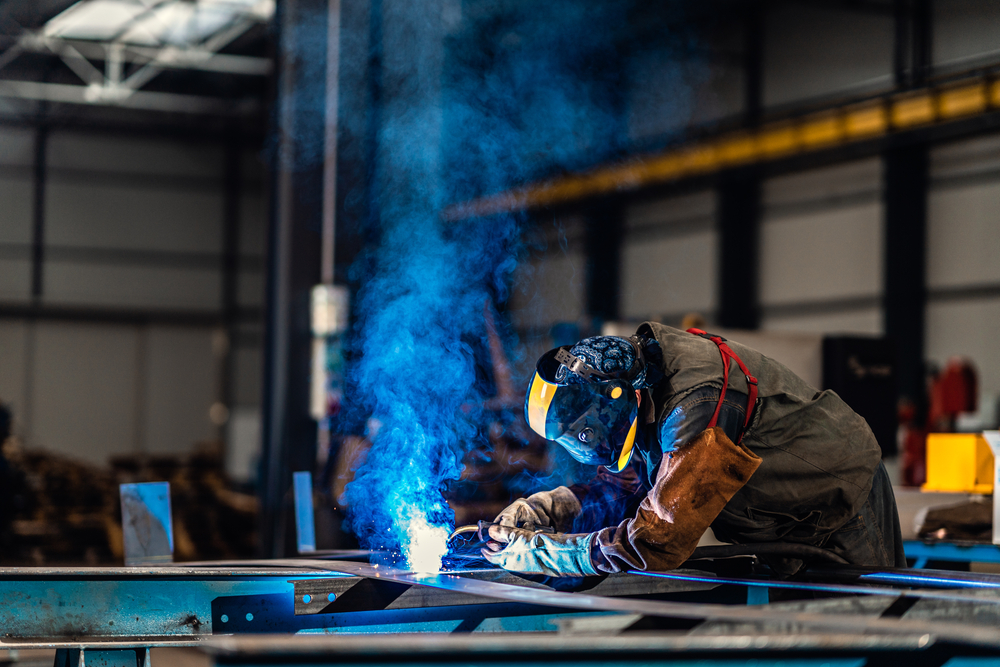
The success of any construction project hinges on the strength, durability, and safety of the structures involved. Welding is a fundamental process in this domain, especially when it comes to fabricating and connecting steel components in buildings, bridges, pipelines, and infrastructure. As the industry evolves, there is increasing recognition of the value of using certified welding practices and professionals in construction projects. A certified welder is more than a skilled tradesperson—they are a verified expert whose work meets stringent industry standards. Choosing certified welding not only ensures quality workmanship but also streamlines compliance, reduces risk, and adds long-term value to the finished project.
Enhancing Structural Integrity Through Certification
At the heart of any construction project is the expectation of strength and longevity. The integrity of a welded joint can determine whether a structure stands the test of time—or fails prematurely. Certified welding ensures that welds meet precise engineering specifications and industry codes. Certification programs, such as those offered by the American Welding Society (AWS), train and test welders to perform specific types of welds under various conditions and materials. This includes flat, vertical, overhead, and horizontal welds, as well as working with metals like carbon steel, stainless steel, and aluminum.
When a certified welder completes a weld, it comes with the assurance that it has been executed under controlled conditions with a high degree of consistency. Certified welders are trained to recognize variables like temperature, pressure, metal fatigue, and environmental influences that can affect weld quality. In structural steel applications—beams, trusses, columns—the reliability of a weld can literally support the weight of an entire building. This is why builders and contractors increasingly specify certified welding in their project plans. It reduces the chances of weld failure and ensures that structures are safe for occupants, workers, and the general public.
Meeting Regulatory and Safety Standards
Construction is among the most heavily regulated industries, and for good reason—public safety is on the line. Whether it’s a commercial building, a residential complex, or an industrial facility, local, state, and federal agencies require strict adherence to safety codes and standards. Certified welding helps construction teams meet these regulatory demands from the outset.
For example, the American Institute of Steel Construction (AISC) and Occupational Safety and Health Administration (OSHA) have specific guidelines regarding welding processes and inspections. Using certified welders helps contractors align their practices with these guidelines, often expediting project approvals and reducing delays during inspections. Inspectors can review welding logs, certifications, and test results to verify that qualified personnel performed the work.
In addition, certified welding helps in the identification and documentation of welding procedures. Procedure Qualification Records (PQRs) and Welding Procedure Specifications (WPSs) form an important part of a quality assurance system in construction. These documents prove that a certain welding method has been tested and approved for the type of joint and material being used. This level of documentation and traceability is often mandatory on government contracts, infrastructure projects, and high-risk facilities such as hospitals and power plants. Certified welders are trained to follow these procedures meticulously, ensuring safety and compliance.
Reducing Liability and Insurance Costs
Every construction project carries inherent risks—physical, legal, and financial. By employing certified welding practices, project managers can significantly reduce their exposure to liability. Faulty welds can result in catastrophic failures, leading to injuries, lawsuits, and costly rework. Certified welders reduce these risks because their credentials demonstrate proficiency and accountability. They are less likely to make critical errors, and if something does go wrong, the paper trail of certifications and inspections can prove due diligence.
Moreover, insurance companies often look favorably on construction firms that use certified welding. Insurers assess risk based on many factors, and the use of properly certified labor is considered a sign of professionalism and safety consciousness. This can result in lower premiums and better policy terms. It can also make a significant difference when seeking project bonding or bidding on public infrastructure projects that require stringent quality control.
In the unfortunate event of a structural failure or accident, having certified welders on the job can help mitigate legal consequences. Legal teams and regulatory bodies will examine whether best practices were followed, and having certified documentation of welding procedures and personnel provides strong evidence of compliance and diligence.
Improving Project Efficiency and Quality Assurance
Construction projects are bound by time, budget, and quality expectations. One of the often-overlooked advantages of certified welding is its contribution to overall project efficiency. Certified welders are trained to execute tasks quickly, correctly, and consistently, which minimizes the need for rework or delays due to errors. Their knowledge of proper techniques, equipment use, and safety protocols allows for smoother workflow and coordination with other trades on the job site.
Quality assurance is also vastly improved with certified welding. Many construction firms implement welding inspection programs to monitor quality throughout the project lifecycle. Certified welders are familiar with the requirements of such programs and contribute to their success by adhering to established welding procedures and maintaining proper records. They are also more responsive to third-party inspectors, which can streamline approval processes and prevent costly shutdowns.
Additionally, using certified welders allows project managers to standardize welding practices across multiple job sites or subcontractors. This consistency reduces variability and enhances predictability in the construction process. Welding tests, inspections, and defect tracking become easier to manage and analyze, ultimately leading to higher quality outcomes and better long-term performance of the built environment.
Supporting Long-Term Sustainability and Industry Reputation
In today’s construction landscape, sustainability and reputation are as important as technical performance. Stakeholders, including investors, clients, and regulators, are increasingly concerned with the environmental and social impact of construction activities. Certified welding contributes to sustainability in several ways.
First, it reduces waste. Poorly executed welds often require grinding, cutting, or complete replacement of components—consuming more materials and energy. Certified welders are less likely to make such errors, contributing to more efficient resource use. Second, certified welding promotes safer job sites, which reduces the frequency of accidents and associated environmental or public health risks.
From a reputation standpoint, construction firms that emphasize certified welding distinguish themselves as quality-focused and responsible. This can be a key differentiator in a competitive market. Clients, especially institutional and government entities, often prefer to work with contractors who have a track record of meeting high standards. By promoting the use of certified welders, companies can enhance their brand, improve client retention, and win more bids.
Furthermore, supporting certified welding helps elevate the entire construction industry. It encourages training, upskilling, and adherence to evolving best practices. It also creates career pathways for welders, who can gain credentials that improve job security, mobility, and earning potential. In this way, certified welding is not only a technical benefit but a workforce development strategy that aligns with long-term industry growth.
Conclusion
The construction industry is under pressure to deliver safe, efficient, and high-quality projects while navigating regulatory scrutiny and stakeholder expectations. Certified welding plays a critical role in meeting these demands. By ensuring weld quality, enhancing structural integrity, and supporting safety compliance, certified welding acts as a cornerstone of modern construction. Its benefits extend beyond technical execution, touching on legal risk, financial efficiency, environmental impact, and industry reputation.
Investing in certified welders is not just a best practice—it is a smart business decision. Whether constructing a skyscraper, a bridge, or a power plant, the assurance of certified welding is a foundation you can build on. In a sector where every joint counts, working with certified professionals makes the difference between standard and standout performance.
Need a Steel Fabricator & Welding Shop In Visalia, CA?
Suburban Pipe & Steel, Inc. DBA Flint Construction. in Visalia, California, doing business as Flint Construction, has been family owned since 1957. We truly understand steel buildings. We design, fabricate, and install all phases of pipe and steel structures for every industry. Contact us today to find out more about our services, rates, and to schedule a consultation. You can even fax us your drawings so we can have a better idea of your vision. We look forward to exceeding your expectations.
